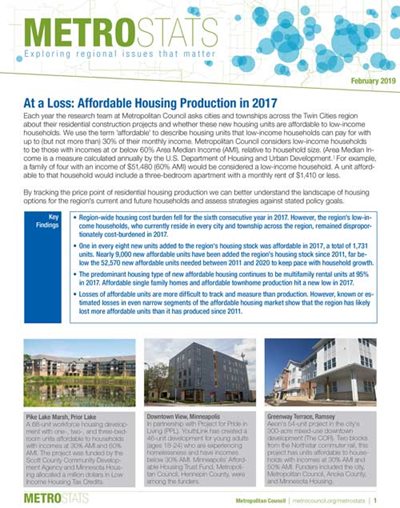A new Metropolitan Council Research report says the seven-county area is losing ground when it comes to meeting the housing needs of working families. The MetroStats report, At a Loss: Affordable Housing Production in 2017 (PDF), is an annual assessment of affordable and life-cycle housing in the metro area.
 Key findings:
Key findings:
-
The region's low-income households, who live in every part of the region, remained disproportionately cost-burdened in 2017. (Paying 30 percent of their income, or more, on housing.)
-
One in every eight new units added to the region's housing supply was affordable to households with low incomes in 2017, a total of 1,731 units. Nearly 9,000 new affordable homes have been added the region's housing supply since 2011. That's far below the forecasted need of 51,000 new affordable units between 2011 and 2020 to meet the needs of current residents and keep pace with demand.
Metropolitan Council considers low-income households to be those with incomes at or below 60% Area Median Income (AMI), relative to household size. (Area Median Income is a measure calculated annually by the U.S. Department of Housing and Urban Development.)
For example, a family of four with an income of $51,480 (60% AMI) would be considered a low-income household. A unit affordable to that household would include a three-bedroom apartment with a monthly rent of $1,410 or less.
At a Loss: Affordable Housing Production in 2017 (PDF)